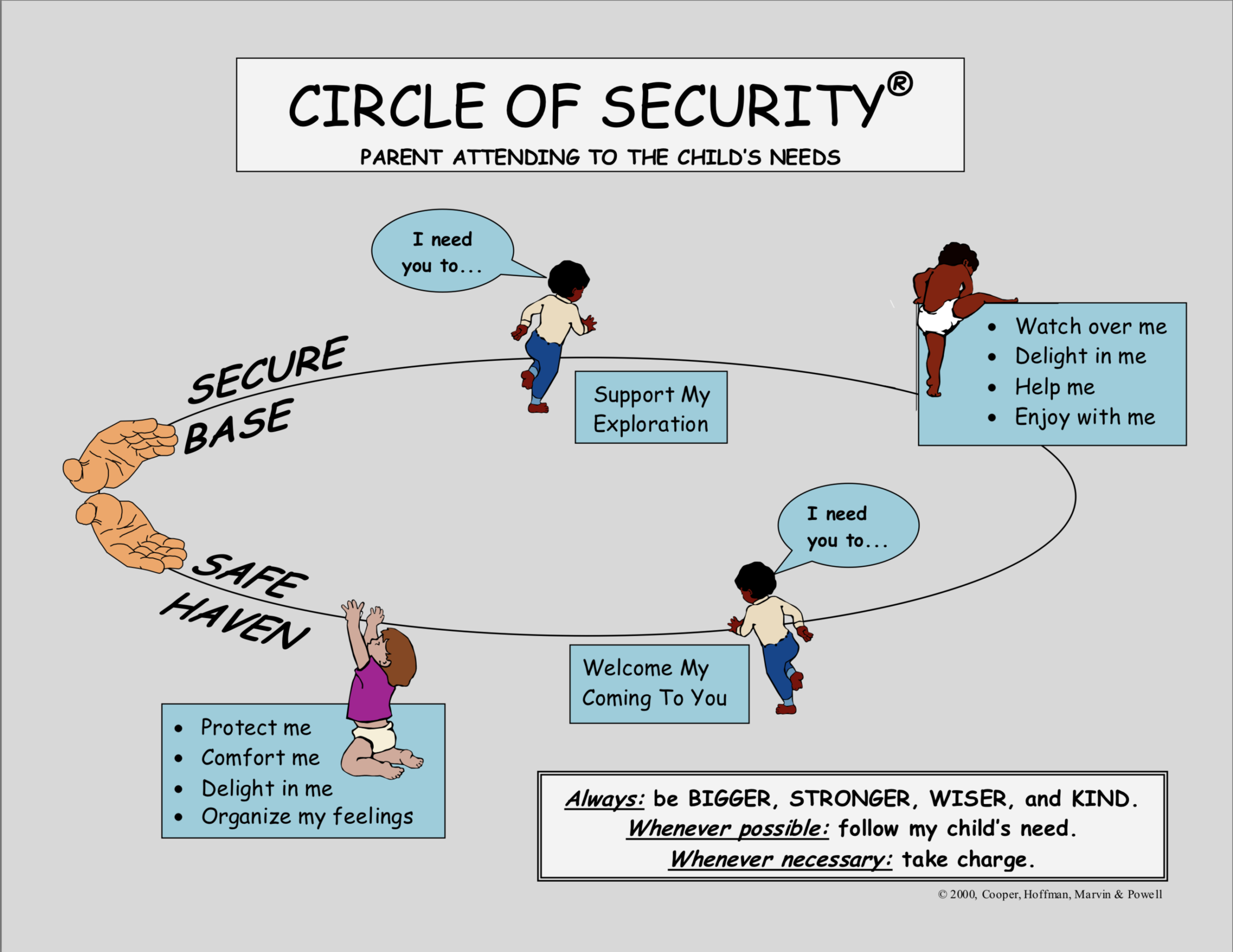Attachment is the basic primary instinct humans have. We are not animals that live alone. We need a tribe because being a member of that tribe keeps us safe. So attachment happens very young and is essential to building a sense of safety and trust in the world.
As a therapist, I am wary of diagnosis and labels. If taken literally, they only explain a very narrow view of a person’s story. Often people can have traits of certain diagnosis without having the diagnosis itself. The same is true with attachment styles. While I am going to explain the different attachment styles, please remember that these styles come from predicaments people faced as children and that the styles explain more about the predicaments than being a rigid rule about attachment.
When we are young we are in a circle of security with our primary caregivers. The circle of security explains the process by which we explore the world. We need both the support and comfort of our caregivers when we are scared while also being encouraged to explore. If any of the elements of the circle of security are missing, then the process of attachment becomes adapted to defend against the painful experience of trust being broken.
The four attachment styles are:
Secure/Autonomous: This child was encouraged to explore, while being able to run back to the safe haven of their parents when they were scared or unsure. Parents were attentive but not overbearing, neither neglectful, rejecting or inconsistent in their affections. This person is not worried about rejection and can get close to others without fear of abandonment or feel claustrophobic when others depend on them. If you are secure, you are a very lucky individual since many are not!
Mantra: “Life and people are trustworthy and secure”
Anxious/Insecure: This child was either ignored or rejected. They are very anxious about attachment. They jump in fast and need emotional intimacy. They do not like boundaries or a feeling of separation and so they can be “mergy” in relationships. They have a preoccupation with real or imagined abandonment. If you are anxious you will have a hard time with boundaries and may exhibit impulsive behaviors to “fix it” with your perceived abandoner. It may feel like there is never enough validation from others.
Mantra: “It is ok for others to have boundaries with me, it does not mean they are rejecting me, I am important even when I am not physically present”.
Avoidant/Dismissive: This style develops when parents were too overbearing or when a parent’s mood was inconsistent and the child never knew how the parent might act towards them. This individual has a hard time getting close to others and easily feels claustrophobic in relationships. They can feel suffocated with any intimacy at all. They prefer their independence and will keep others at arms length. they may do destructive behaviors to create distance in relationships. They can be emotionally unavailable or even physically unavailable in some way.
Mantra: “If I open up to you, you will not engulf me or be unpredictable towards me. I will try to tolerate my fear of being engulfed”.
*Anxious and Avoidant: Some people have both anxious and avoidant attachment in their style. These are the individuals who will be anxious when it feels like others are unavailable and then others are available, they will become avoidant. I call this the “push/pull”. They will push you away when you are in with them and pull you in the minute you try to leave. This is the fundamental predicament of borderline personality disorder, but remember you can have this style and not this disorder. However the phrase associated with this style is “I hate you and don’t ever leave me”.
Mantra: “Unavailability is not safe. Consistency is. I will learn to stay, and accept that you will not reject me if I do stay.”
Disorganized/Unresolved: Disorganized attachment happens when there has been real trauma. This person cannot handle any emotional closeness in a relationship and can act in emotionally unregulated ways. They can be abusive with rage. They rapidly cycle through different aspects of attachment but do not land on any way to truly connect or attach to another. They are unresolved in the attachment process and are stuck without having developed a clear attachment at all.
Mantra: “The world is safe, I am no longer experiencing trauma. People can be safe too”.
The reason it can be useful to know your attachment style is because then you can work on maladaptive behaviors used as a defense mechanism. I see a lot of people in the avoidant and anxious range and we work on behaviors of codependency, unavailability, setting boundaries, respecting boundaries, being defensive etc. I find understanding the story of my attachment history helps me to use tools to calm and soothe the little girl inside who needs help developing a secure attachment. You can earn a secure attachment this is in fact called an earned secure attachment. This happens when you get in a relationship with someone who teaches you about secure attachment and you lean to do it.
I hope this is helpful in the pursuit of understanding yourself and your personal growth. I am curious, what do you think your attachment style is?

















